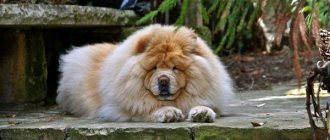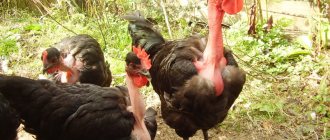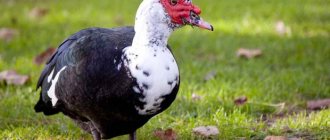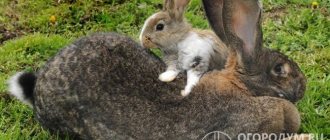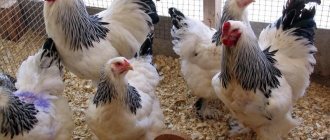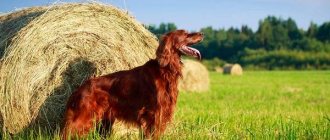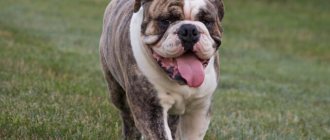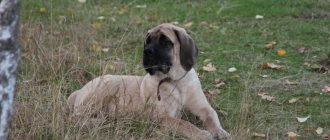Until 1920, the breed was known only in South America, then European poultry farmers liked it and they spread and adapted it. In our country, Araucanas are rare birds. They are bred as ornamental eggs because of their appearance and the special color of their eggs, although they do not cause trouble for the breeder. Read more about the characteristics of the Araucana breed later in the article.
Description and features
The most important features of this breed are the color of the shell and the absence of a tail. And also a cute feather decoration in the form of a “beard and mustache”. Regarding the complete absence of a tail, this is what distinguishes German chicken breeds. English and American cats still have a small tail.
Araucana eggs are very unusual. It is believed that the Aborigines tried to cross chickens with pheasants to get such a unique color. However, modern research has shown that this is not the case. The color of the eggs is due to the presence of biliverdin in the egg ducts of the female bird.
This green bile pigment is an intermediate product of the breakdown of hemoglobin. The eggs are bluish-greenish, the size is almost like that of an ordinary chicken, weight 57-58 g. It should be noted that this chicken, despite its decorative appearance, is an excellent layer. You get yourself not only a beautiful, but also a productive bird.
The Araucana in the photo are very attractive. They are not very large, but strongly built. The feathers look like a thick carpet. They come in a variety of colors, including interesting combination colors. There are black, golden, black-red, wheat, blue feather colors, as well as their variegated combination.
The appearance of chickens is strictly determined by accepted standards. The head is small, on a short neck, which imperceptibly passes into a wide, straight back, and in front into an equally wide, non-convex chest. The eyes are round and the color is reddish-orange. The beak is small, curved slightly downwards. The comb is small, similar to the pod of a legume plant.
The earrings and ears are reddish, also very neat. The feathers on the sideburns are pronounced. The body is plump and compact. The wings are short and fit tightly to the body. Usually there is no tail, this is caused by the absence of caudal vertebrae, such a dominant trait passed on from generation to generation.
The legs are not long, blue-green in color. There are 4 toes on the feet. These chickens are medium in size. An adult chicken weighs 1.5-1.7 kg, a rooster - 1.8-2.0 kg. Eggs begin to lay early, quickly reaching maturity. In a year, one bird can lay 160-180 eggs. An egg every other day.
Blue eggs
Characteristics of Araucana chickens will be incomplete without a description of their eggs, which are no less exotic than the birds themselves. The main highlight is in the shell. It comes in different shades of blue and green. In pursuit of such an unusual product, many connoisseurs until recently were ready to overpay many times over. Interest in Araucana eggs was also fueled by rumors about their miraculous properties. The product was believed to have valuable dietary properties due to the fact that... it is completely cholesterol-free.
In fact, these are ordinary chicken eggs. They are tasty and nutritious, however, like everyone else, they contain yolk, and therefore cholesterol. The exotic color of the shell is explained by the presence of a large amount of biliverdin pigment in the Araucana body, while protoporphyrin is usually responsible for the color of colored chicken eggs. It is this that gives the shell its usual shades - from beige to brown.
Kinds
Depending on the color of the feather, Araucana chickens are divided into several subspecies. Initially, 5 main colors were established and standardized - golden, blue, white, black and wild. But many of their combinations were added to them: black-red, wild blue, golden-maned blue, blue-wheaten, wheaten, silver-maned, blue-bordered, cuckoo (hawk-like).
Conventionally, all these birds can be divided into 3 species - according to the standards accepted for them.
- American chickens are Ameraucana. These chickens are obtained by crossing the main Araucana breed with other chickens. They were bred in the 70s of the last century to get away from the problems associated with breeding tailless chicken. And also get pure blue eggs. These eggs are in great demand.
- The tailed Araucanus was also bred in England, and it also has a crest on its head.
- However, the most correct and classic breed is considered to be the one adopted according to the standard of German breeders. They recognize only tailless breeds of chickens, however, there are also options among them: with feather tufts on the sides, with feather tufts and a beard, without feather tufts, but with a beard and sideburns.
There is also a dwarf breed, which was bred in 1975 in the USA, and in 1984 included in the standard. Its body shape is similar to the main chicken. The height is not much less than them. The difference is in the size of the eggs. They are noticeably smaller. The color of the eggs of all these Araucan breeds is blue , greenish or turquoise..
There are other decorative breeds of chickens that lay colorful eggs. For example, olive eggers, Easter eggers, cream legbar. Most often, their eggs are also not a brightly saturated color, but pinkish, bluish, slightly olive or creamy.
And if you come across a chocolate-colored egg, this is not a crossbreed, but almost the same popular breed of chicken as the Araucana, Maran . They are also very beautiful, but have a not so ancient pedigree.
Origin
Araucana are chickens of Chilean origin, which Europe learned about at the beginning of the 16th century. The history of unusual birds goes back several centuries. Initially, they were bred by the Indians, who used these birds mainly for fighting. They selected the most cocky tailless roosters, crossed them with local laying hens, and as a result they received beautiful and fearless offspring. The young grew quickly, and after six months the females gave birth to the first clutch of blue eggs.
For a long time, the Araucanians remained a curiosity for Europeans, but by the middle of the last century their population had become so numerous that in Germany it was decided to approve the breed standard and officially breed miracle chickens.
Pros and cons of the breed
The Araucana breed of chickens is not only beautiful, but also practical and useful. Their positive qualities can be called:
- Unpretentiousness and quick adaptation.
- Adaptability to any temperature.
- Araucan chickens have good vitality and survival rate.
- The female matures early and begins to lay eggs.
- Eggs are laid a lot and often.
- They are able to decorate any poultry house, as they are very good-looking.
- And they are delicious.
But there are also negative points:
- First of all, the pugnacity of roosters. This quality can bring many complications when starting a breed.
- Females do not incubate eggs. They just don’t know how, they’ve lost this instinct. If you want to breed, think about what kind of chicken you can put them on. Or buy an incubator.
- After crossing with other breeds, the Araucana does not stand the test of strength, quickly losing its uniqueness, first in appearance, then in the color of the eggs.
- This is still a decorative breed, and therefore rare and expensive.
Breeders reviews
The Araucana breed is becoming increasingly popular throughout our country. If earlier the unusual tailless chicken was just a kind of decoration for the chicken coop, today it is a diligent and diligent layer. These hens and cockerels are loved for their absolute unpretentiousness and omnivorous nature. In addition, eggs of unusual color are becoming very popular. Araucana chickens are also raised easily and without special features; the safety of the young is very high.
According to reviews from farmers who have unusual chickens on their farm, the following advantages and disadvantages of the Araucana breed are noted.
| Advantages | Flaws |
| Unpretentiousness, easy adaptation; | Roosters are too warlike and pugnacious; |
| Low sensitivity to temperature fluctuations; | Chickens have no brooding instinct; |
| Early maturity and good egg laying; | Due to the rarity and unusual nature of the breed, young animals and adults are expensive to purchase. |
| The young animals have good preservation and high vitality; | |
| The aesthetic beauty of birds, their unique exterior. |
Care and maintenance
Before choosing this breed for your farm, you need to know some of the disadvantages that cause poultry to be rejected:
- First of all, look at the eggs. They should only be a regulated bluish-greenish color. A different color indicates the impurity of the breed.
- Experienced farmers advise starting Araucan breeding with chickens, not eggs.
- A clumsy, angular individual, a rooster’s comb has fallen off - all this should also alert you, something is wrong with them.
- Appearance must meet standards. Signs such as a pronounced beard, lack of sideburns, or feather tufts on only one side, a developed tail - all this indicates the “uncleanness” of the breed.
- Chickens of this breed are quite calm, strong and hardy. They are non-conflict and quickly adapt to other people's conditions. But the Araucan rooster is very pugnacious. He does not tolerate other roosters near him. Don't forget that it was originally bred as a fighting breed. Therefore, before you get such chickens, place another rooster for a while. Or even provide a separate pen for them.
- To purchase this breed, it is better to contact a trusted seller.
- Be sure to quarantine newly acquired beauties so that they do not get sick from an accidentally introduced virus.
- Check your purchase periodically for parasites. It is better to prevent a disease than to fight it later.
The walking yard must be reliably isolated from other animals and birds. You can cover the top with a chain-link mesh or make a canopy. It will also provide protection from the sun if necessary. It is also advisable to make a roost based on the size of the chickens. Each requires at least 30-35 cm.
There should be no more than 5-6 hens in the nest, this is the most comfortable number for them. Their diet is tailored to the local region. Depending on the time of year, green feed, garden waste, green grass, pine flour and vitamin supplements are introduced.
They are given whole grains, vitamin flour, mineral supplements and various small shells and stones, especially for grinding food and forming shells. Sometimes chalk and wood ash are added to feed lime.
Home-cooked food is also acceptable. Boiled and crushed potatoes, pumpkin, and chopped root vegetables can be added as carbohydrates and fiber. It is important for laying hens to receive a balanced diet with sufficient protein. In reasonable quantities, you can add ground cake, beans, earthworms and boiled fish to their food.
You need to feed them at least three times a day if you want them to lay eggs well. Sprinkle the grain in the morning and evening, and the wet mixture during the day. However, make sure that your pets do not overeat, as this may affect egg production.
Keep in mind that if you provide chickens with enough space to roam, they will provide themselves with many of the necessary substances - insects, snails, slugs, worms. They are excellent foragers. It is better to prepare mineral fertilizer in a separate feeder.
And a little about prevention:
- Try to keep wild birds away from your pets; they can carry various diseases and parasites.
- Carry out anthelmintic treatment twice a year.
- Change the bedding regularly to a new one.
- Wash feeders and drinkers once a day, periodically disinfect the chicken coop and bathing containers.
- Do not allow strangers wearing clothes or shoes into the chicken coop. They can also carry an infection.
Possible problems
There are not many problems with breeding Araucanas. Let's look at the main ones.
Diseases
Birds have good health and very rarely get sick. If the conditions of detention are violated, they may become infected with the following pests:
- Pooh-eater. The parasite damages the downy rods. The chickens begin to fuss and itch. To eliminate the problem, they are treated with insecticides in the form of a spray and the chicken coop is also disinfected.
- Feather mite. Infection leads to baldness. The problem is that it is impossible to remove it, so infected individuals are killed.
- Fleas. Infection is manifested by frequent scratching of birds. To eliminate fleas, you need to disinfect the chicken coop and change the litter regularly.
- Helminths. The pathology manifests itself as poor appetite and decreased motor activity. The most common cause of infection is contact with wild birds. Treatment involves taking special anthelmintic drugs prescribed by a veterinarian.
To avoid the spread of chicken diseases, it is recommended to regularly clean the poultry house.
They don't fly well
There may be several reasons:
- Age-related changes. Araucanas can lay eggs up to 10 years of age, but egg production is greatly reduced. Maximum productivity is observed until approximately 1-2 years.
- Binge eating. Obesity reduces egg production. The weight of an adult chicken should not exceed 1.8 kg.
- Infestation with parasites. Has a direct effect on egg production downwards.
Reproduction and lifespan
As already mentioned, Araucana chickens have completely lost their brooding instinct. Therefore, in reproduction, you yourself will become one of the main participants. In order to ensure fruitful mating, you need to trim the chicken's feathers within a radius of 4-6 cm around the genitals.
This is done with ordinary scissors; the chickens are very flexible and trusting, and the procedure is easily tolerated. If you do not provide such treatment, all eggs will remain unfertilized. To facilitate mating, some also trim the rooster's private parts. But it's not easy. A bully can easily peck you.
When the egg is laid, you come into play again. The hen will not sit on the eggs, so you need to place them in an incubator. The hatching egg must be selected very carefully, with great care. Keep in mind that egg color changes several times during the season. At the beginning it is more saturated, then it fades.
After the end of the cold season it becomes brighter again. Don't let this scare you. If you come across an egg of a standard color, but smaller in size, approximately 43-50 g, a dwarf Araucana tried it. , Araucana chickens are no different from other chickens.
Their behavior, appearance and taste preferences are absolutely identical to small birds of “non-aristocratic” breeds. Even gender cannot be determined until a certain point. Perhaps they are a little more resilient than other individuals.
The biological life potential of these chickens is 3-5 years. With a good owner they can live for 6 years. In order for them to delight you with their amazing qualities for a long time, you need to provide them with conscientious care. In comparison, regular laying hens can live longer, perhaps because they have maternal instincts. There have been cases of survival for more than 10 years.
Productivity
Puberty in Chilean laying hens occurs at six months of age. After another year and a half, at the peak of egg production, they produce up to 180 eggs per year, weighing 60-70 g each. It has been noticed that the color of the shell largely depends on the season - in the warm season it is brighter.
The meat yield from each carcass is a little more than 60%. The flesh of Araucan is tender, juicy and aromatic, reminiscent of the taste of quail.
Price
First of all, choose a breeder with a pure line to purchase. Even in large cities this is not easy. Because they can slip an ordinary yard or “Easter” chicken. They are still classified as outbred hybrids of known and recognized breeds.
The price of the Araucana breed varies depending on age. Day old chicks cost approximately 250-350 rubles, those grown up to 2-3 months cost 500 rubles. One-year-old pullet – from 1500 rubles. If you planned to take a family, a rooster and a hen, you can find it for 2,500 rubles. Prices are current as of June 2022.
Before purchasing, read reviews about the breeder, and then check the documents. And don't buy alone, consult someone. Preferably with someone who already owns these beautiful chickens. Or with someone who personally advised you to buy them.
Feeding
Chilean birds eat the same set of feeds as other egg-laying chickens. The basis of the diet is grains, which are supplemented by:
- greens and root vegetables;
- vegetables and low-fat broths;
- fish and meat and bone meal;
- vitamin and mineral supplements;
- other products.
Araucana, more than representatives of meat breeds, need mineral supplements to maintain their own health, as well as to form strong egg shells.
A little history
Chickens with blue eggs have been described to Europeans for just under 500 years. However, for a long time, for the whole world, except for South America, they remained exotic and unknown.
Araucana was introduced to the world at the World Scientific Poultry Association in 1920 in The Hague. The characteristics of the breed have won the hearts of European poultry farmers. It began to spread quickly and then further work with unusual birds began. This has led to the fact that poultry is now subject to several standards.
Chicken breeding
Breeding the Araucana breed has two difficulties. One of them is associated with a low percentage of egg fertilization due to the special body structure of chickens and roosters. The tailless Araucanas lack not only feathers, but also the last few vertebrae. Because of this, difficulties arise with the mating of birds, as a result, the proportion of fertilized eggs does not exceed 60%, and can reach zero. Therefore, adult birds (both sexes) must be subjected to the procedure of trimming the fluff in the cloaca area. After this, egg fertilization increases to a level of 90 to 100%.
The second problem is the presence in birds of a semi-lethal gene linked to genes responsible for the absence of a tail and specific plumage on the head. When crossing two individuals who are carriers of this gene, the percentage of fertilized eggs and the survival rate of their offspring decreases significantly. To avoid this, when creating families, you should select hens and roosters so that each of the pair has only one characteristic - either a beard or tassels on the head, and the characteristics should not match. For example, a chicken with a beard, and a rooster with a tassel.
Hatching instinct
Araucana chickens have not completely lost their brooding instinct, although they rarely exhibit maternal qualities. Only every seventh or eighth hen can become a full-fledged hen, but such hens not only hatch the clutch, but also raise chicks.
Chick care
Raising chicks has no specific differences from standard rules for keeping chickens. The exception is the diet:
- You cannot start feeding with boiled eggs. On the first day, it is recommended to give chickens starter feed. Later, boiled eggs are given in moderation, mixing each with 50 g of semolina.
- Dry millet is contraindicated; only boiled millet is acceptable.
- On the third day, you can add cottage cheese, fermented milk products, and crushed grains to your diet.
- On the fifth day, greens are added to the menu, which should be finely chopped.
At the age of a week, chickens are transferred to a regular diet. It is necessary to accustom young animals to adult food by 2 months.
Incubation
Chicks are hatched in an incubator. When laying eggs in an incubator, it is important to have them candled to identify unfertilized eggs; such eggs are removed for poultry feed.
Table of temperature and humidity modes
| Period |
